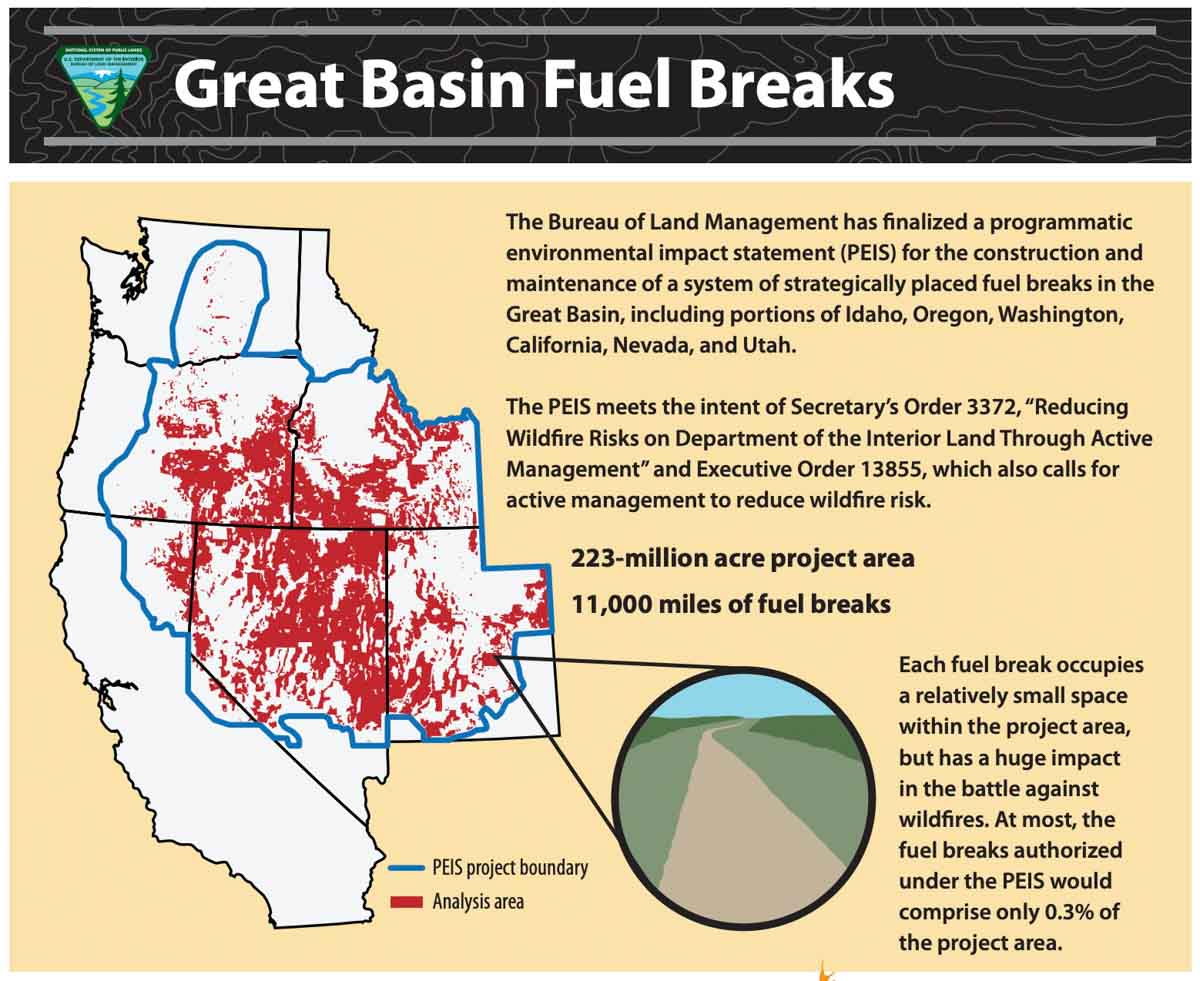Environmentalists have filed a notice of intent to sue the U.S government to block plans to build up to 11,000 miles of fuel breaks they contend would violate the Endangered Species Act in a misguided effort to slow the advance of wildfires in six Western states, the Associated Press reported.
On February 14, 2020 the Bureau of Land Management (BLM) released the Final Programmatic Environmental Impact Statement (PEIS) for Fuel Breaks in the Great Basin. It outlines the construction and maintenance of a system of up to 11,000 miles of fuel breaks within a 223 million acre area to aid in the control of wildfires in portions of Idaho, Oregon, Washington, California, Nevada, and Utah.
The Preferred Alternative outlined in the PEIS analyzes manual, chemical and mechanical treatments, including prescribed fire, seeding, and targeted grazing to construct and maintain a system of fuel breaks. These treatments would be implemented along roads and rights-of-way on BLM-administered lands to minimize new disturbance and wildlife habitat fragmentation and to maximize accessibility for wildland firefighters.
Thanks and a tip of the hat go out to Kelly.


As a firefighter with over 20 years experience it still makes me laugh when these environmental groups wish to protect a frog or something of the like at the expense of people like my friends or myself. I would love to to see any one of these people hike their way through a forest heading towards the fire with everything that they need on their back and when they get close enough to hear the crackling and roar of a canopy fire burning just a few hundred yards away, break out the tools and beat back that fire instead of crapping themselves running away in terror. Maybe if they actually had to spend a day doing that they would present an actual honest to goodness method to do something to stop a fire rather than just holding a snugly frog.
We meaning the Wildland fire agencies etc all.
USFS, BLM, CALFIRE.
Steve: Who is “we?” Can you be more specific or cite an example?
This is the perfect example of what discussions on this and other wildland sites have held ad nauseum about our inabilities to enact reasonable wildland fire prevention actions. We get held up in court by extremist environmental groups until we either lose interest and abandon the project or spend so much money defending it, that it never reaches the intended result.
There is no data supporting construction of fuel breaks. The opposite is true. Fuel breaks don’t stop fires which can jump 12 lane freeways or mile wide rivers. Fuel breaks spread cheat grass and other noxious weed which burn early and hot. Not good. Fuel breaks disrupt habitats. Fuel breaks require road building which further degrades environments. They waste fossil fuels. Fuel break construction is expensive and the cost benefit basis is a negative number. Fuel breaks add to erosion and stream silting.
Fuel breaks are really ugly.
Sorry…
In fact there is no scientific basis for this practice.
Upon what data is the conclusion (fuel break construction) based?